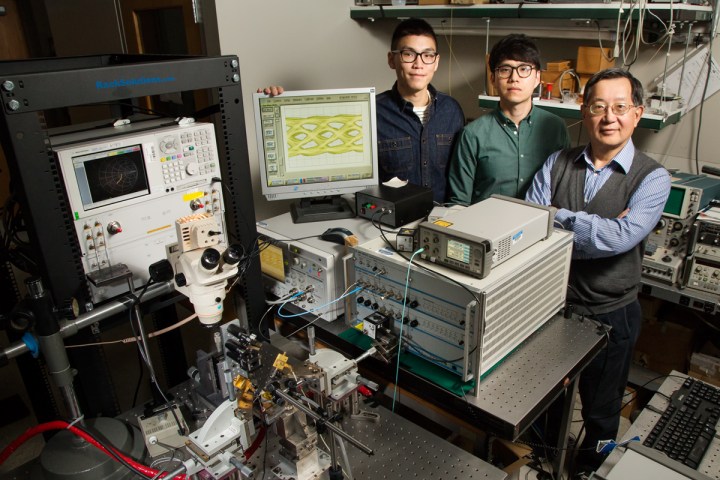
The engineers transmitted 57Gbps of error-free data at room temperature. The group, led by Professor Milton Feng, improved on its previous work in 2014, when it achieved 40Gbps. The keywords here are “error free,” which is what makes this research unique from other that claim faster speeds.
The ability to send big data at high speeds is crucial, Feng said. “There is a lot of data out there, but if your data transmission is not fast enough, you cannot use data that’s been collected; you cannot use upcoming technologies that use large data streams, like virtual reality. The direction toward fiber-optic communication is going to increase because there’s a higher speed data rate, especially over distance.”
But what’s more interesting is that the engineers were still able to transmit 50Gbps at high temperatures of up to 185 degrees Fahrenheit. For data center builders, this is significant because “achieving high speeds at high temperatures is very difficult,” Feng said. “That’s why data centers are refrigerated and have cooling systems.”
Feng adds that the discovery could also benefit “airborne, lightweight communications” in airplanes, due to fiber-optic wires’ light weight and the resistance to high temperatures. Shedding any weight off a plane where possible can help conserve fuel.
Major tech and telecom companies are betting big on fiber-optic infrastructures to deliver the massive amount of data. But as Engadget points out, the technology is proven for short distances, like in data centers and planes, but the challenge might be in how fast fiber optics can carry big data across long distances, without degrading when it reaches the destination.


